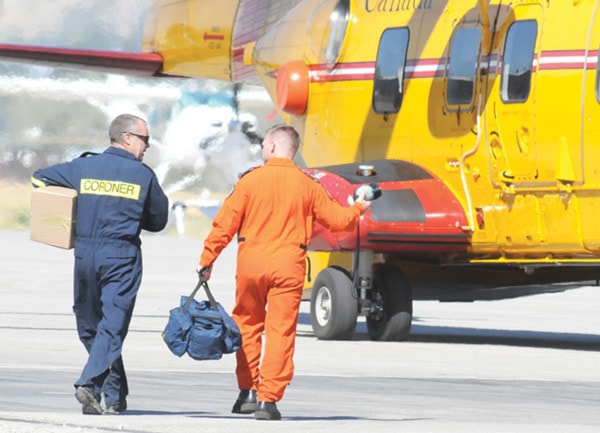Excess weight is one of the factors that contributed to a plane crash that took the lives of two people shortly after it departed the Penticton airport last summer.
The investigation found that a number of factors contributed to the accident including a reduced rate of climb. This was attributed to atmospheric conditions, the aircraft being over its gross takeoff weight, reduced power in the right engine and the decision not to use available turbochargers.
"The investigation also determined that the safety of passengers could have been improved if the aircraft had been equipped with shoulder harnesses to complement the available lap belts," said the report by the Transportation Safety Board of Canada.
The B.C. Coroners service identified the deceased as Jayson Dallas Wesley Smith, 30, of Vancouver and Lauren Patricia Sewell, 24, of Surrey. Friends of the couple said Sewell had bought Smith flying lessons for his birthday just two months prior to the crash. It wasn't clear whether the flight they were on was part of the gift.
 The Piper Twin Comanche left Penticton on Aug. 13, 2012 at 2:32 p.m. on a flight to Boundary Bay with one pilot and three passengers onboard. The aircraft's emergency beacon was activated around 3 p.m. and detected by a WestJet plane that was in the area. The wreckage was located about two hours later in a wooded area near the Brenda Mines site, approximately 18 kilometres west of Kelowna with emergency responders parachuting down to the scene.
The Piper Twin Comanche left Penticton on Aug. 13, 2012 at 2:32 p.m. on a flight to Boundary Bay with one pilot and three passengers onboard. The aircraft's emergency beacon was activated around 3 p.m. and detected by a WestJet plane that was in the area. The wreckage was located about two hours later in a wooded area near the Brenda Mines site, approximately 18 kilometres west of Kelowna with emergency responders parachuting down to the scene.
The plane flew northbound over Okanagan Lake for approximately 20 nautical miles before turning west into a valley. This was 14 nautical miles further than planned due to a lower than expected rate of climb.
"The investigation also determined that the safety of passengers could have been improved if the aircraft had been equipped with shoulder harnesses to complement the available lap belts," said the report.
The TSB is an independent agency that investigates marine, pipeline, railway and aviation transport occurrences for the advancement of transportation safety. The board does not assign fault or determine civil or criminal liability.
Investigators established the risk of a post-crash fire was reduced because the aircraft battery had disconnected during the crash. This removed the potential ignition source for the remaining aviation fuel.
Following the accident, NAV Canada and Transport Canada have added information on recommended altitudes when departing the Okanagan Valley and suggest flying routes between Princeton, Brenda Mines, Highway 97C and Okanagan Lake. A new sign was installed at the Penticton airport advising pilots to climb to 5,000 feet prior to turning west or east when departing the Okanagan Valley.
The plane crash came almost two years to the day of another accident where a Piper Comanche went down on Apex Mountain killing four men. The wreckage was found eight days later in rugged terrain. That flight started in Kelowna and made a stop in Penticton, where two duffel bags of unknown weight were unloaded before resuming its trip to Victoria. A TSB report on the Apex crash said the plane was overloaded when it left Kelowna and attempted to climb over a ridge 6,500 feet over sea level when it struck trees just below the summit.
